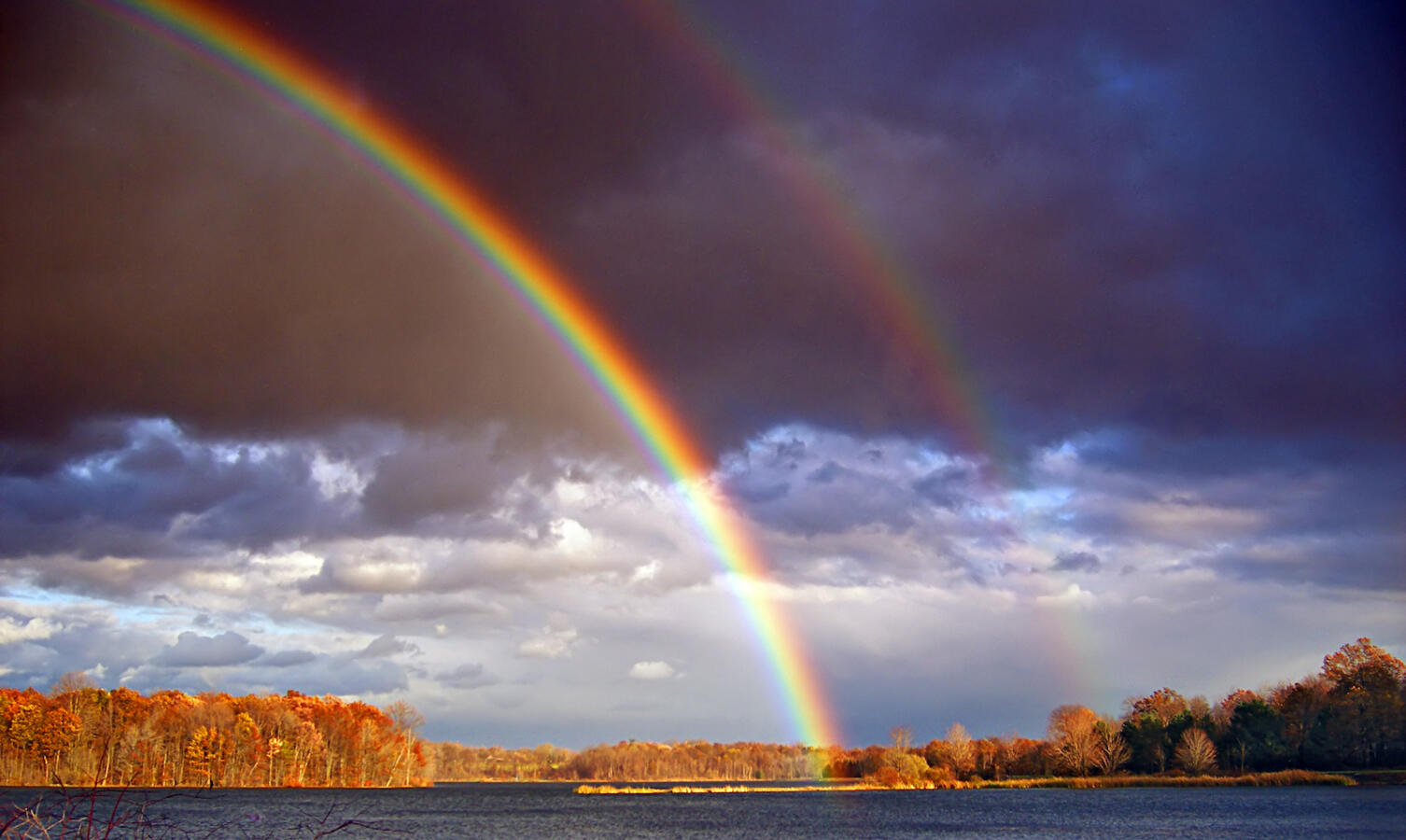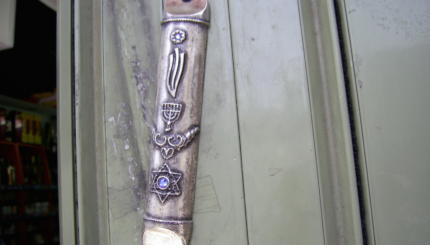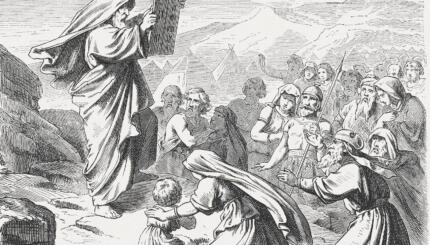Rainbows are deeply symbolic in Judaism. The principal source of this is the 9th chapter of Genesis, where God blesses Noah after destroying the earth with a flood, crowning humankind as masters over all of nature and charging Noah to be fruitful and multiply — an echo of the blessing God gave to Adam in the Garden of Eden. God then promises never again to destroy the world by flood and establishes the rainbow as a sign of that promise. This idea is reflected in the Hebrew word for rainbow, keshet, which like its English counterpart connotes a weapon used to shoot arrows — one that is pointing at heaven, reminding God to keep this promise.
I have set My bow in the clouds, and it shall serve as a sign of the covenant between Me and the earth.
When I bring clouds over the earth, and the bow appears in the clouds,
I will remember My covenant between Me and you and every living creature among all flesh, so that the waters shall never again become a flood to destroy all flesh.
When the bow is in the clouds, I will see it and remember the everlasting covenant between God and all living creatures, all flesh that is on earth.
That,” God said to Noah, “shall be the sign of the covenant that I have established between Me and all flesh that is on earth.” (Genesis 9:13-17)
On the basis of this story, the rabbis of the Talmud (Berakhot 59a) established that one should recite a blessing on seeing a rainbow, as they did for various other natural phenomena, though in typical fashion they disagreed about what the blessing should be. One opinion holds that one should bless God “who remembers the covenant with Noah.” Another maintains that the blessing is “who is faithful to his covenant and fulfills his word.” The accepted practice is to say a blessing that incorporates both of these elements. The blessing reads in full:
בָּרוּךְ אַתָּה ה’ אֶלוֹהֵינוּ מֶלֶךְ הָעוֹלָם זוֹכֵר הַבְּרִית וְנֶאֱמָן בִּבְרִיתוֹ וְקַיָם בְּמַאֲמָרוֹ
Baruch ata ado-nai elo-heinu melech ha’olam zocher ha’brit v’ne’eman bivrito v’kayam b’ma’amaro.
Blessed are You, Lord our God, King of the universe, who remembers the covenant, and is faithful to His covenant, and keeps His promise.
Though the rainbow is considered a sign of blessing, because it emerged from God’s destruction of the earth, there is a tradition that rainbows have a dark side — that is, but for God’s mercy and promise to Noah, the earth would be destroyed. Elsewhere, the Talmud even goes so far as to suggest that in times when perfectly righteous people are living, there are no rainbows — since it is in their merit (rather than God’s promise) that the world continues to exist. On this basis, the Mishnah Berurah asserts that one should not tell people when there’s a rainbow in the sky, equating it with spreading rumors.
The Talmud also states (Chagigah 16a) that a rainbow is one of three things that should not be stared at lest a person’s “eyes grow dim.” (The other two are the head of the Sanhedrin and the priests.) This thinking is based on a verse from Ezekiel 1:28, which states: “As the appearance of the bow that is in the clouds in the day of rain so was the appearance of the brightness round about. This was the appearance of the likeness of the glory of the Lord.” Rainbows, in other words, are the likeness of God, and staring at God’s likeness is considered disrespectful.
With your help, My Jewish Learning can provide endless opportunities for learning, connection and discovery.
The question then arises how one can say the blessing over a rainbow if one can’t look at it and can’t even hear about it from someone else who happened to see it. The Shulchan Arukh, the most significant medieval Jewish law code, rules that one may look at a rainbow solely to say the blessing — but no longer.
In contemporary times, Jewish thinkers have ascribed still more associations to the rainbow. Rabbi Samson Raphael Hirsch, the great 19th-century German scholar, said the rainbow’s colors represent different types of people and the rainbow as a whole symbolizes unity, an idea evoked by many contemporary invocations of the rainbow. Rabbi Shlomo Riskin has suggested that since the rainbow is a half circle it represents the idea that God can promise not to destroy the earth, but humanity must become partners in that endeavor, in doing so making up the unseen other half of the rainbow.
In the 1950s, Rabbi Zalman Schachter-Shalomi, the founder of the Jewish Renewal movement, designed a tallit prayer shawl in rainbow colors based on the mystical idea that the colors correspond to the seven lower sefirot, or divine emanations. The design caught on and rainbow shawls are now common in Jewish communities around the world.



